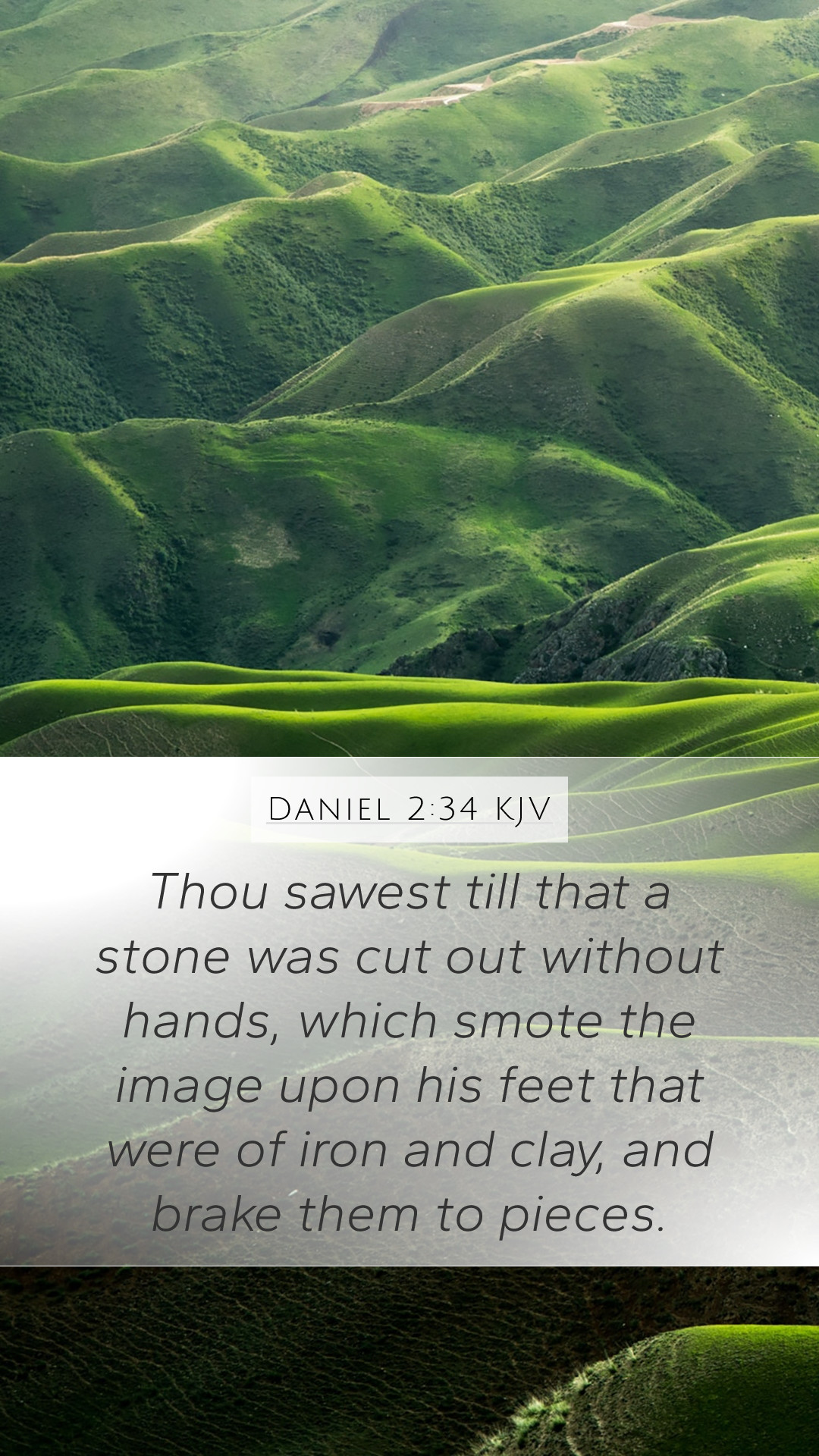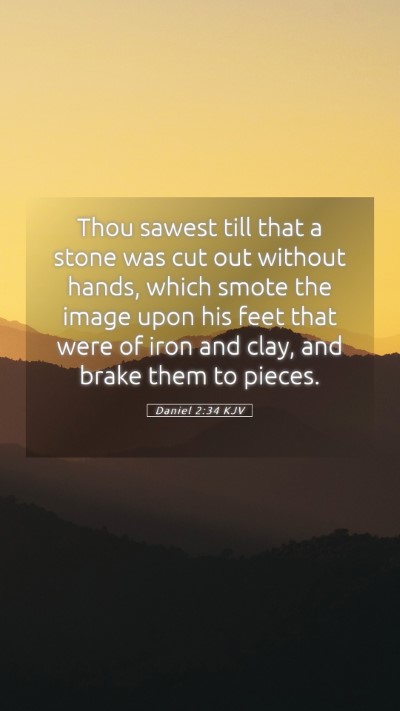Bible Verse Commentary on Daniel 2:34
Understanding Daniel 2:34
Daniel 2:34 states, "Thou sawest till that a stone was cut out without hands, which smote the image upon his feet that were of iron and clay, and brake them to pieces." This significant verse reveals crucial elements of biblical prophecy and divine intervention in human affairs. To fully grasp its implications, we will delve into various aspects derived from esteemed public domain commentaries, such as those by Matthew Henry, Albert Barnes, and Adam Clarke.
Insights from Public Domain Commentaries
1. The Stone Cut Without Hands
Matthew Henry emphasizes that the stone symbolizes Christ, who is the cornerstone of God's spiritual world. The phrase "cut out without hands" signifies that this stone is of divine origin and indicates the miraculous nature of Christ's coming and his kingdom.
2. The Image of Gold, Silver, Brass, Iron, and Clay
Albert Barnes reflects on the image in Nebuchadnezzar's dream, which represents various kingdoms and empires. The feet being made of iron and clay suggest a weakness in the final kingdom, hinting that it will not endure. The smiting of the image by the stone represents God's ultimate authority in overthrown worldly powers.
3. The Divine Nature of the Kingdom
Adam Clarke notes that this stone not only represents a kingdom but also signifies the eternal and indestructible nature of God’s kingdom. While human kingdoms rise and fall, the kingdom established by Christ will endure forever, reinforcing the idea of divine sovereignty over earthly affairs.
Key Themes and Meanings Derived From the Verse
- The Assurance of God’s Sovereignty: This verse illustrates that humanity's endeavors are ultimately subject to divine authority. The stone's impact on the image symbolizes God's power to dismantle and judge earthly kingdoms.
- Fulfillment of Prophecy: The imagery of the stone and the image depict the unfolding of God's plan throughout history, showing the transition from earthly kingdoms to the eternal kingdom of Christ.
- Symbolism of Strength and Fragility: The division of the image into various materials (gold, silver, iron, and clay) points to the strengths and vulnerabilities of human governance contrasted with the indomitable nature of God's kingdom.
Application of the Verse in Daily Life
Understanding this verse encourages believers to reflect on the stability offered by faith in God’s kingdom amidst the uncertainties of political and societal upheavals. It invites a deeper contemplation of where one places their trust—whether in earthly powers or in the everlasting kingdom of Christ.
Cross References for Further Study
- Psalm 118:22 - The stone which the builders rejected has become the chief cornerstone.
- Matthew 16:18 - On this rock, I will build my church.
- Revelation 11:15 - The kingdom of this world is become the kingdom of our Lord and of His Christ.
Conclusion
Daniel 2:34 serves not only as an important prophetic declaration but as a profound reminder of God’s ultimate control over human history. By engaging in thorough Bible verse explanations and Bible verse interpretations, believers can gain invaluable Bible study insights and deeper understanding of Scripture. This verse encourages a reflective approach to Bible study resources and fosters a more profound appreciation for biblical prophecy and its significance in the life of a believer.


